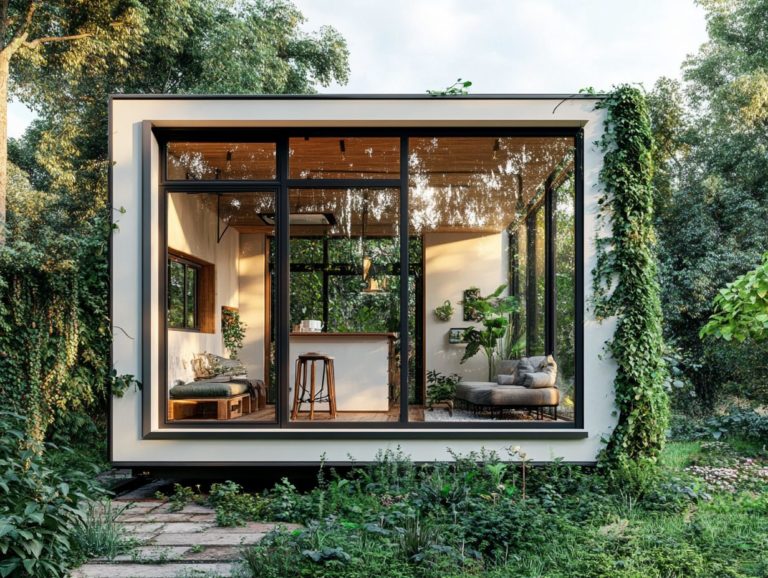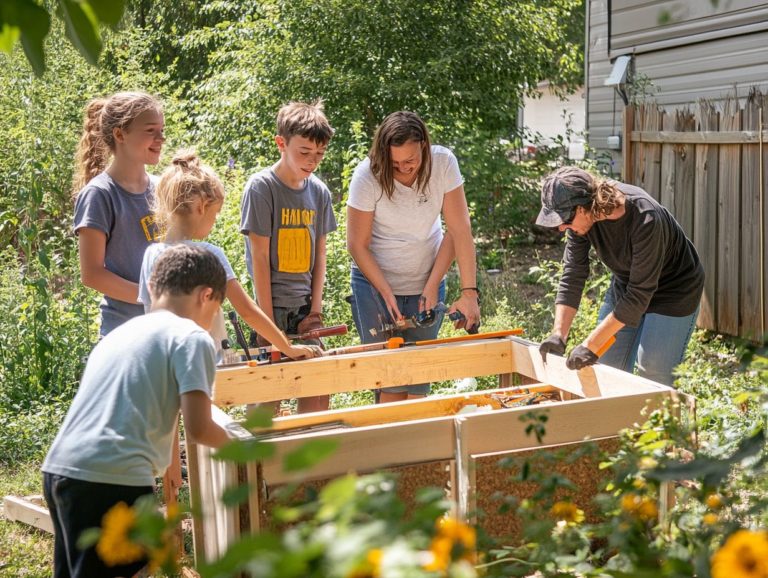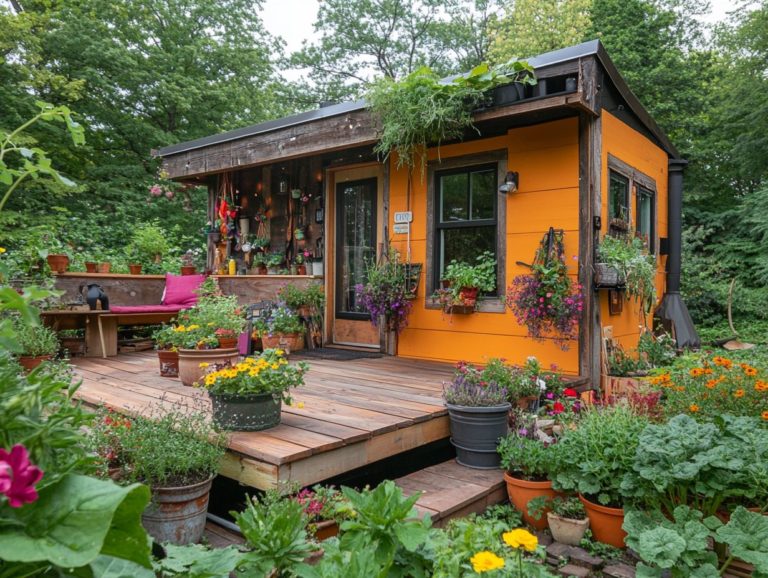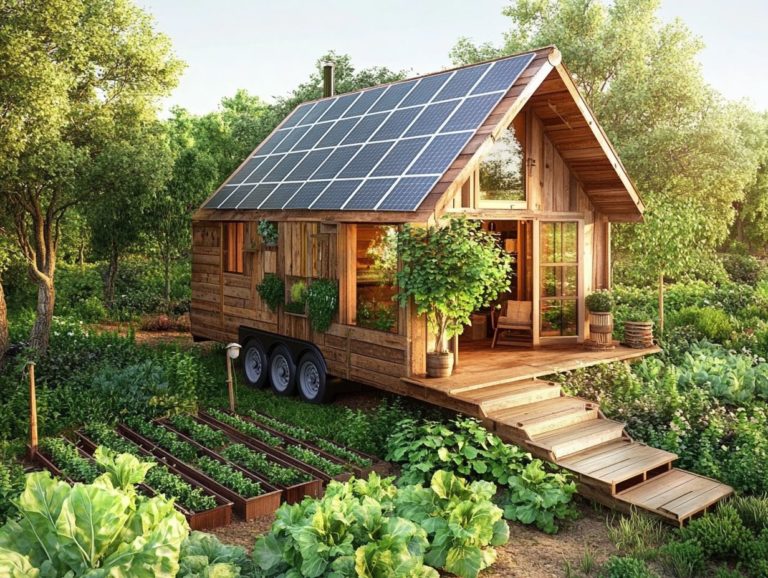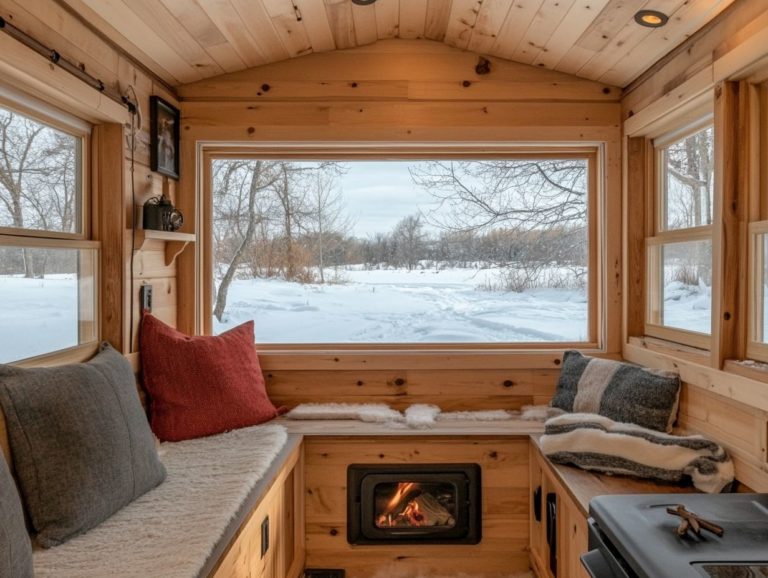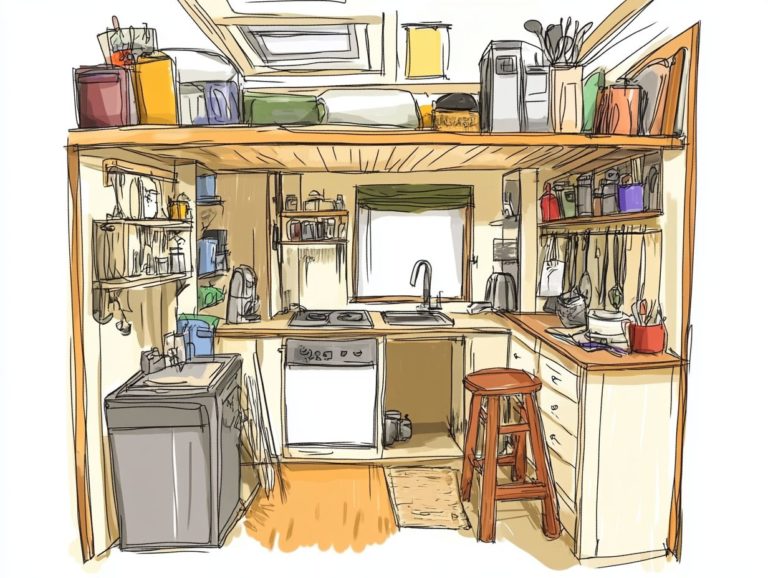Is Tiny House Living Suitable for Families?
In recent years, tiny house living has become an alluring lifestyle choice for many, particularly families looking for a simpler, more intentional way of life while embracing the concept of mortgage-free living.
But is it genuinely a fit for families? This exploration delves into the benefits like cost savings and a reduced environmental footprint while also tackling the challenges, such as limited space and the necessary lifestyle adjustments that come with family living.
You’ll find a discussion on crucial factors to weigh before taking the plunge, along with practical tips for thriving in a tiny home, including design customization and effective planning. Whether you’re merely curious or thinking about making this exciting change, there s valuable insight here for you.
Contents [hide]
- Key Takeaways:
- Benefits of Tiny House Living for Families
- Challenges of Tiny House Living for Families
- Factors to Consider Before Choosing Tiny House Living
- Tips for Families Living in a Tiny House
- Frequently Asked Questions
- Is Tiny House Living Suitable for Families?
- What are the benefits of Tiny House Living for families?
- Are there any drawbacks to Tiny House Living for families?
- Can a Tiny House accommodate a family with children?
- Are there any legal restrictions for families living in Tiny Houses?
- How can families make Tiny House Living work for them?
Key Takeaways:
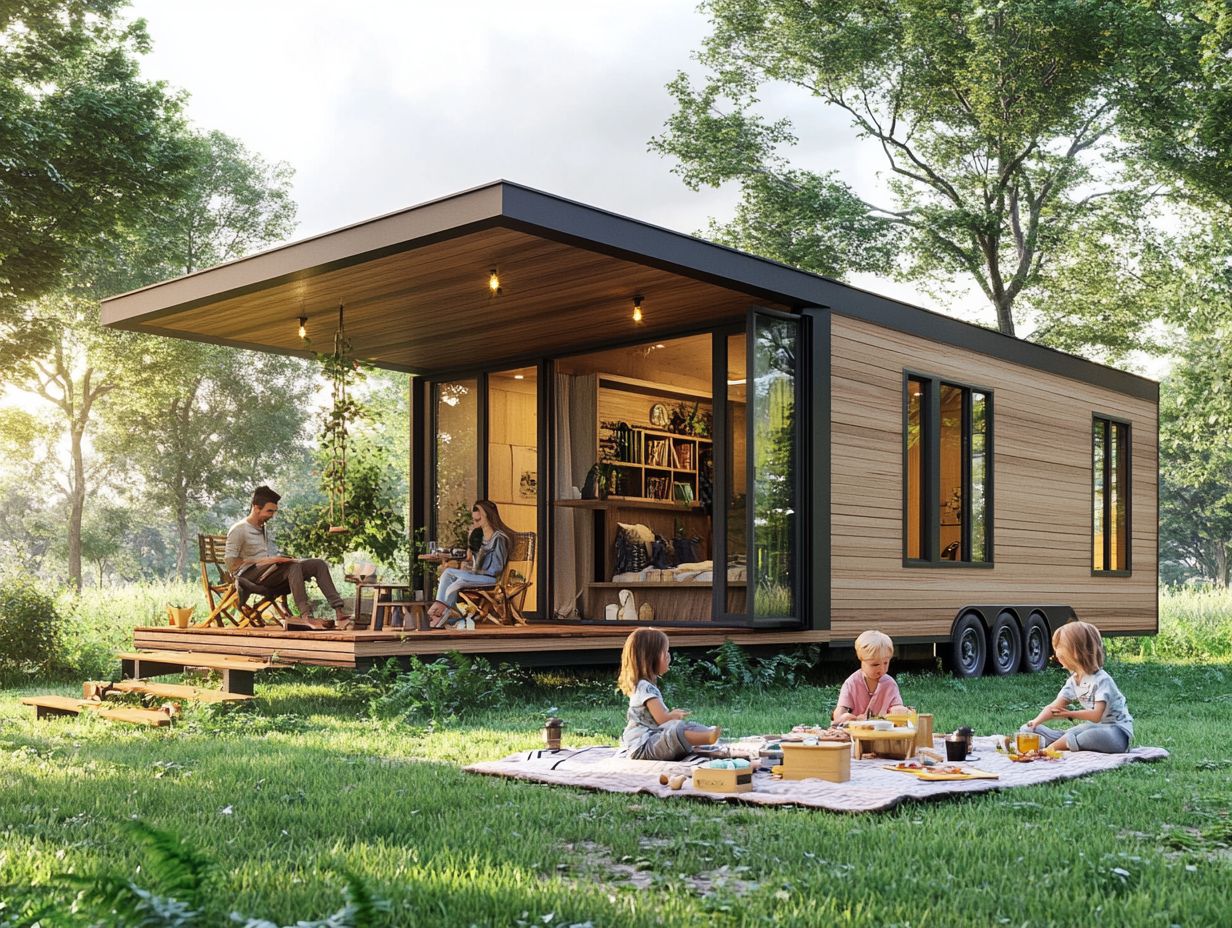
- Save costs and embrace a minimalist lifestyle with tiny house living.
- Assess your space needs and think about zoning rules before making a decision, especially regarding your travel plans.
- Maximize space and maintain a healthy family dynamic through organization and open communication.
What is a Tiny House?
A tiny house is more than just a compact living space; it s typically under 400 square feet and designed to promote a simplified lifestyle that champions financial freedom and environmental responsibility. This innovative dwelling often features spaces with multiple uses, allowing you to make the most of limited space while honing your organization skills.
The allure of tiny house living lies not only in its cost-effectiveness but also in its ability to foster deeper family connections and quality time together. If you’re wondering is it possible to downsize to a tiny house, initiatives like Tiny House Expedition, led by Kimberley Mok, allow you to explore customization options to craft cozy homes that reflect your unique needs and preferences.
Emerging from a movement aimed at countering consumerism and promoting sustainable living, tiny houses frequently incorporate eco-friendly materials and energy-efficient technology, showcasing a remarkable blend of modern architecture and practicality. This shows how tiny houses can create a sustainable future.
Unlike traditional homes, which can feel overwhelming in both size and expense, these compact spaces offer ingenious storage solutions and smart layouts, ensuring every square inch is utilized effectively. This trend reflects a growing awareness of the environment and a desire for a minimalist lifestyle, where you can find joy in simplicity rather than in material abundance, ultimately enhancing emotional well-being.
Benefits of Tiny House Living for Families
Tiny house living presents a wealth of advantages for families, such as substantial cost savings and enhanced emotional well-being, helping families connect better.
By choosing a mortgage-free lifestyle, you can redirect your finances toward shared activities, travel experiences, and experiential learning, ultimately elevating your overall quality of life.
The simplicity of tiny living inspires you to explore creative solutions and prioritize meaningful connections, paving the way for a sustainable future that nurtures both your financial and emotional health while also encouraging nature engagement.
Cost Savings and Minimalism
One of the most significant advantages of tiny house living is that you can save a lot of money. This is often achieved through a commitment to minimalism and smart financial planning. By reducing the size of your home, you can enjoy lower utility bills and diminished maintenance costs. You may even eliminate mortgage payments entirely, leading to greater financial stability.
Tiny homes offer innovative storage solutions. This helps you optimize limited space and maintain an organized, clutter-free lifestyle. Such an environment is essential for preserving private spaces for each family member.
These clever designs maximize every square foot and encourage you to embrace life with fewer possessions. This aligns perfectly with a sustainable lifestyle that is eco-friendly and economically viable. Tiny living communities, such as those affiliated with the Tiny House Association, actively promote these benefits through community engagement. They offer resources and networks for individuals interested in adopting this lifestyle.
Join exciting workshops and events offered by these organizations! They foster a sense of belonging among those dedicated to cost-effective living and enhancing social interactions. Ultimately, tiny house living does more than support your financial well-being; it nurtures a deeper connection to a simpler and more fulfilling way of life.
Environmental Impact
The environmental impact of tiny house living is truly profound. These homes are crafted to minimize your ecological footprint and champion sustainability. By using fewer resources, you can embrace environmental responsibility while enjoying the rewards of a simplified lifestyle.
Tiny houses often feature eco-friendly building methods and materials, making them perfect for those who prioritize environmental consciousness. Tiny living encourages you to rethink how you consume, leading to reduced energy use.
With smaller spaces requiring less heating and cooling, you will likely notice a significant drop in utility costs and energy consumption. This encourages active lifestyles and nature engagement.
Choosing sustainable materials elevates the aesthetic appeal of your compact home. It also supports local economies and lessens dependence on non-renewable resources. Many tiny living communities actively promote low-impact lifestyles, fostering a sense of shared responsibility for preserving the environment. You ll find neighbors engaging in collective initiatives like community gardens and recycling programs, creating a vibrant and responsible community atmosphere.
Challenges of Tiny House Living for Families
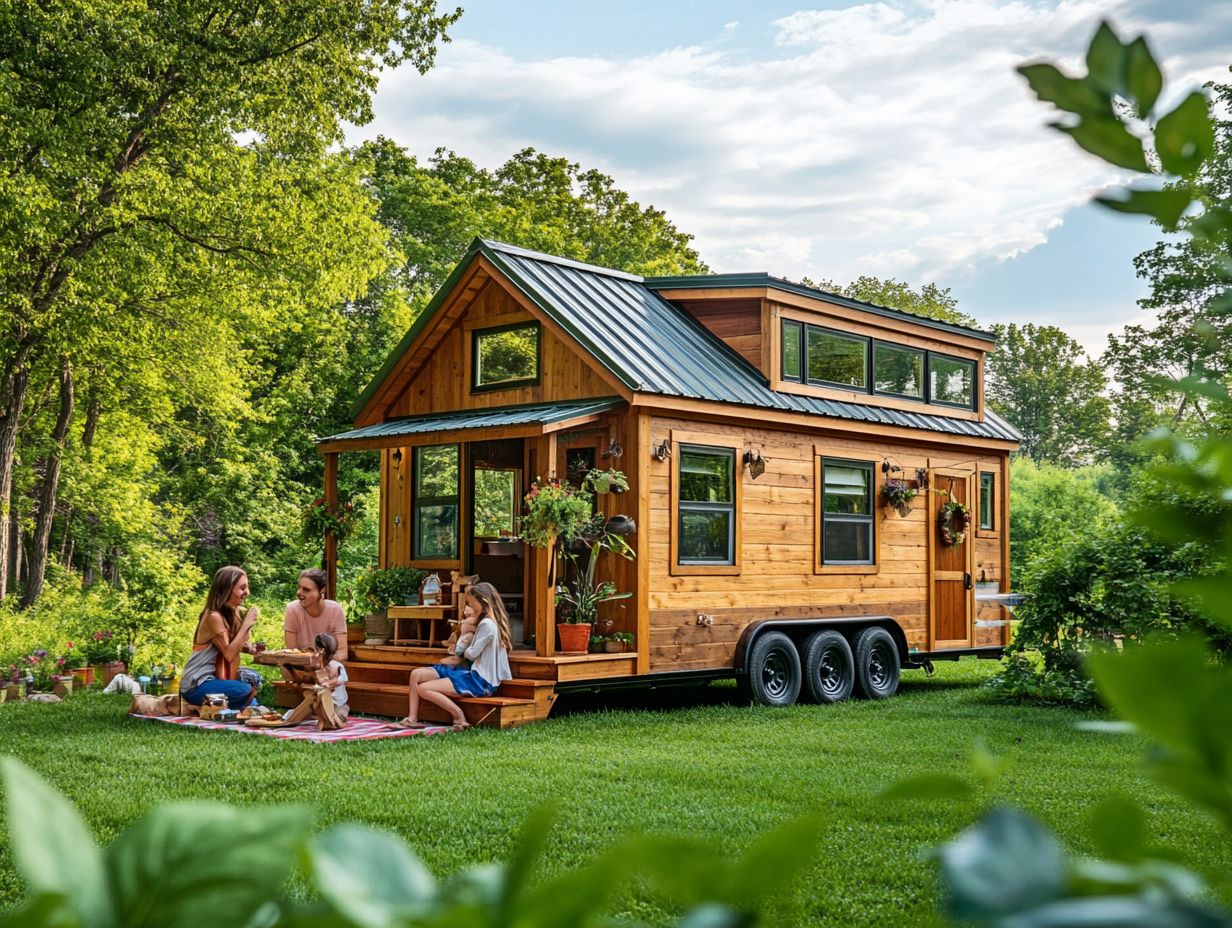
While tiny house living boasts many benefits, it also presents specific challenges for families. These challenges often involve navigating limited space, parenting challenges, and preserving privacy in a shared environment.
The compact design of tiny homes can complicate parenting. You may find it challenging to carve out personal space for each family member while ensuring that essential functions, like a home office or kids’ bedrooms, are still covered. Exploring tiny house design ideas for families with kids can help you create spaces that facilitate homeschooling activities and supportive family connections.
Mastering effective planning and organization skills becomes essential in tackling the unique hurdles that come with the nuances of tiny living, particularly in the realm of creative play and everyday life.
In conclusion, tiny house living offers numerous advantages while also presenting unique challenges. If you’re ready to simplify your life and embrace these changes, consider the possibilities that tiny living can offer.
Space Limitations and Privacy
Space limitations in tiny houses often pose challenges when it comes to maintaining privacy. Family members share common areas and resources, so honing your organization skills is vital.
Embrace multifunctional spaces to create innovative solutions that carve out private nooks within your home. This is essential for parents managing home offices and homeschooling, while also creating a comfortable environment for their children.
Navigating these tight quarters effectively calls for a blend of creative ideas and a keen understanding of each family member s needs. For example, using tall storage options can help you make the most of your space while designating specific spots for personal items. You might also consider implementing room dividers, like curtains or bookcases, to create temporary separations, allowing everyone to carve out their personal retreats amidst communal living.
Striking a harmonious balance between shared experiences and personal space not only enhances relationships but also fosters individual well-being. As each family member learns to respect boundaries and cultivate a sense of calm in these cozy surroundings, you’ll find that life in a tiny house can be both fulfilling and enriching. However, it’s important to understand the tiny house legal considerations for families to ensure a smooth living experience.
Adjusting to a Different Lifestyle
Adjusting to a different lifestyle in a tiny house can be both rewarding and challenging for your family, especially as you navigate parenting hurdles and reimagine your daily routines, drawing from creative solutions.
The journey toward tiny living often brings a mix of excitement and apprehension, and this experience affects each family member in unique ways. You might feel a bit stressed tackling the logistics of downsizing, while your children may be unsure about their new surroundings.
As you adapt, you may discover that these smaller spaces require more intentional interactions. Embracing rituals like shared meals or family game nights can significantly strengthen your bonds and encourage open communication. Ultimately, this fosters a supportive environment that nurtures both emotional resilience and interpersonal growth for everyone involved.
Factors to Consider Before Choosing Tiny House Living
Before you jump into tiny house living, take a moment to consider key factors that can truly shape your experience, especially your family size and specific needs, including features of the home and potential upgrades to the home.
Understanding local zoning regulations (the laws that dictate where you can build) is vital for a smooth transition into tiny living. Reflecting on your ideal location helps you find environments that fit your lifestyle, whether it s near nature or close to community activities.
By thoughtfully considering these elements, you can pave the way for a more harmonious and fulfilling tiny living adventure.
Family Size and Needs
Determining your family size and individual needs is a pivotal step in the tiny house decision-making process, as these factors directly shape the design customization and essential home features for your daily living. If you have a larger family, prioritizing spaces that serve multiple purposes can help accommodate various activities and preferences.
In contrast, if you re part of a smaller household, you may find yourself focusing on simplicity and efficient use of space. By understanding these requirements, you can create a tailored living environment that enhances your overall experience.
For example, if you have children, you might need dedicated sleeping areas that can seamlessly transform into play spaces during the day, ensuring that functionality stays at the forefront of your design. On the flip side, couples or singles may prefer open floor plans that foster a sense of spaciousness, integrating smart storage solutions to maximize every square foot.
Beyond layout, specific amenities like a spacious kitchen or a cozy workspace come into play, highlighting the importance of thoughtful design that aligns with your unique lifestyle and preferences. Ultimately, these considerations lead to a tiny house that is not only livable but also a true reflection of your individual needs and desires.
Location and Zoning Regulations
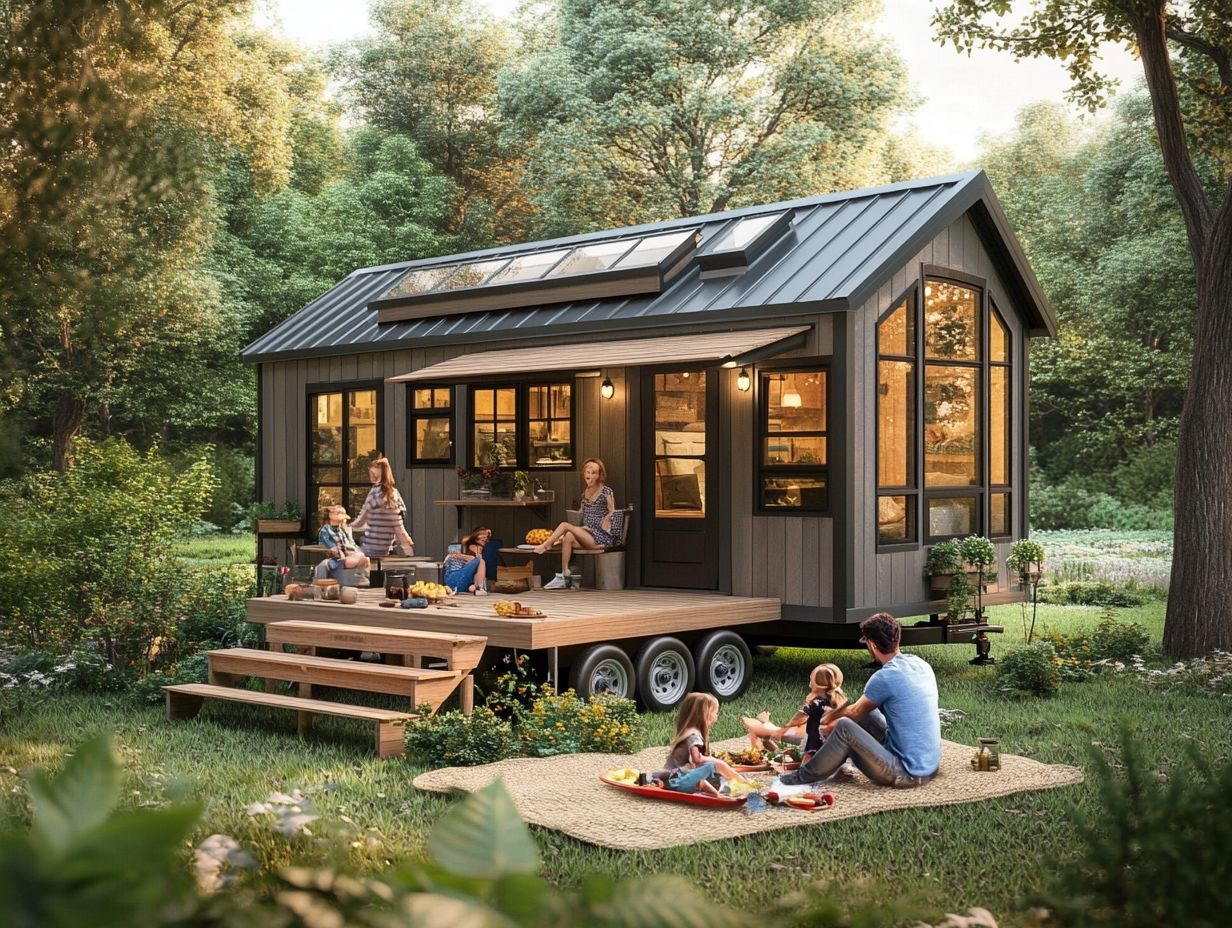
Choosing the right location for your tiny house is crucial, not just for aligning with your lifestyle but also for understanding local laws that determine how land can be used. Research local laws to ensure a smooth transition into tiny living! Non-compliance can lead to significant hurdles.
Opt for a location that reflects environmental responsibility, which can truly elevate your tiny living experience. As you explore potential sites, consider proximity to essential services like schools, grocery stores, and healthcare facilities, all of which play a significant role in your daily life.
Connect with local zoning boards for invaluable insights. They can guide you through restrictions related to size, permitted uses, and utility connections.
Connecting with other tiny house enthusiasts and local advocacy groups can also be incredibly beneficial. They offer firsthand knowledge and support, making your adaptation to this unique lifestyle not only feasible but also enriching.
Tips for Families Living in a Tiny House
To thrive in a tiny house, families can embrace a range of strategies tailored to maximize space and nurture a harmonious family dynamic. Hone organization skills and establish effective planning routines to create multifunctional areas that cater to diverse activities while fostering emotional well-being.
These approaches help maintain a clutter-free environment and encourage quality time and shared experiences among family members, enriching your home life in the process.
Maximizing Space and Organization
Maximizing space and organization is essential for families living in a tiny house. Making the most of your limited square footage can significantly improve your daily life. Embrace innovative storage solutions and design multifunctional spaces to seamlessly blend various activities from homeschooling to creative play.
Focusing on organization skills cultivates a more tranquil environment, allowing you and your loved ones to enjoy quality time together without feeling constricted.
To achieve this, utilize vertical storage options, such as wall-mounted shelves and cabinets that capitalize on lofty ceilings. Opt for furniture that serves multiple purposes, like a sofa that effortlessly converts into a bed or a dining table with built-in storage to significantly cut down on clutter.
Creative room dividers can help define spaces while also offering additional shelving, ensuring every inch is used wisely. Don t overlook under-bed storage and hidden compartments to effectively conceal everyday items, keeping your living area neat and organized. These thoughtful design choices maximize your physical space and contribute to a harmonious and functional living environment.
Maintaining a Healthy Family Dynamic
Maintaining a healthy family dynamic in a tiny house demands intentional effort and effective communication, especially since those close quarters can amplify parenting challenges. Foster emotional well-being by prioritizing shared activities and creating designated private spaces for personal reflection and growth.
Implement strategies that encourage cooperation and understanding so your family can thrive together in your cozy home. Embrace open dialogues to allow each member to express their feelings and needs freely.
Establishing regular family meetings serves as an effective platform for addressing any issues that might arise from living in tight spaces, ensuring everyone feels heard and valued.
Engaging in collaborative projects like cooking, gardening, or arts and crafts strengthens family bonds and instills a sense of teamwork. Balance these collective activities with individual downtime to maintain harmony, giving everyone the opportunity to recharge and pursue personal interests, ultimately nurturing deeper relationships within your family unit.
Frequently Asked Questions
Is Tiny House Living Suitable for Families?
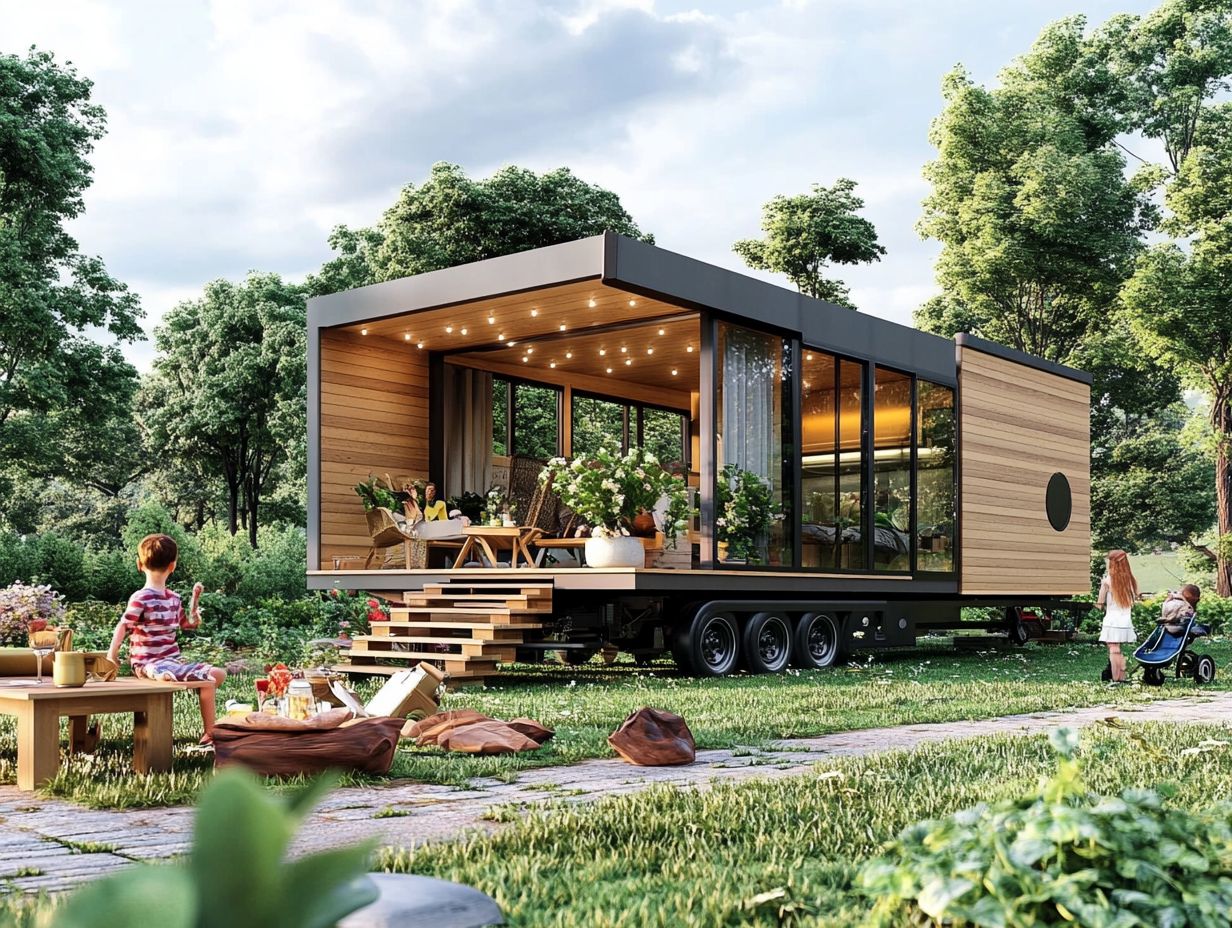
Yes, living in a tiny house can be suitable for families. It depends on their needs and preferences!
What are the benefits of Tiny House Living for families?
Tiny House Living promotes closer family bonds and reduces expenses. It encourages a simpler, more sustainable lifestyle!
Are there any drawbacks to Tiny House Living for families?
Some families find adjusting to smaller spaces a bit challenging. They may also struggle with limited storage options.
Can a Tiny House accommodate a family with children?
Absolutely! Tiny houses can be designed for families with children by using furniture that folds or tucks away for more space.
Are there any legal restrictions for families living in Tiny Houses?
The legality of living in a tiny house varies by location. It’s essential to check local zoning laws and building codes!
How can families make Tiny House Living work for them?
Families can thrive in a tiny house by downsizing their possessions. Utilizing outdoor spaces and creating designated areas for each member helps a lot!

